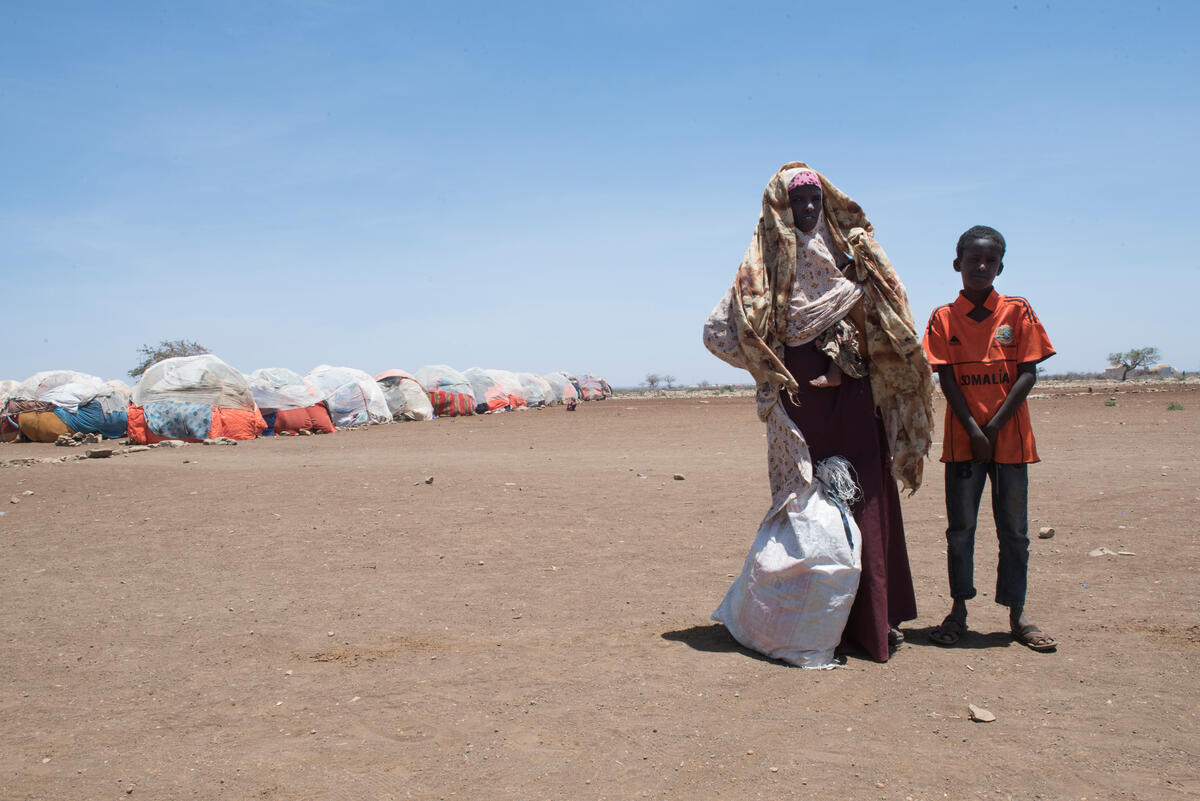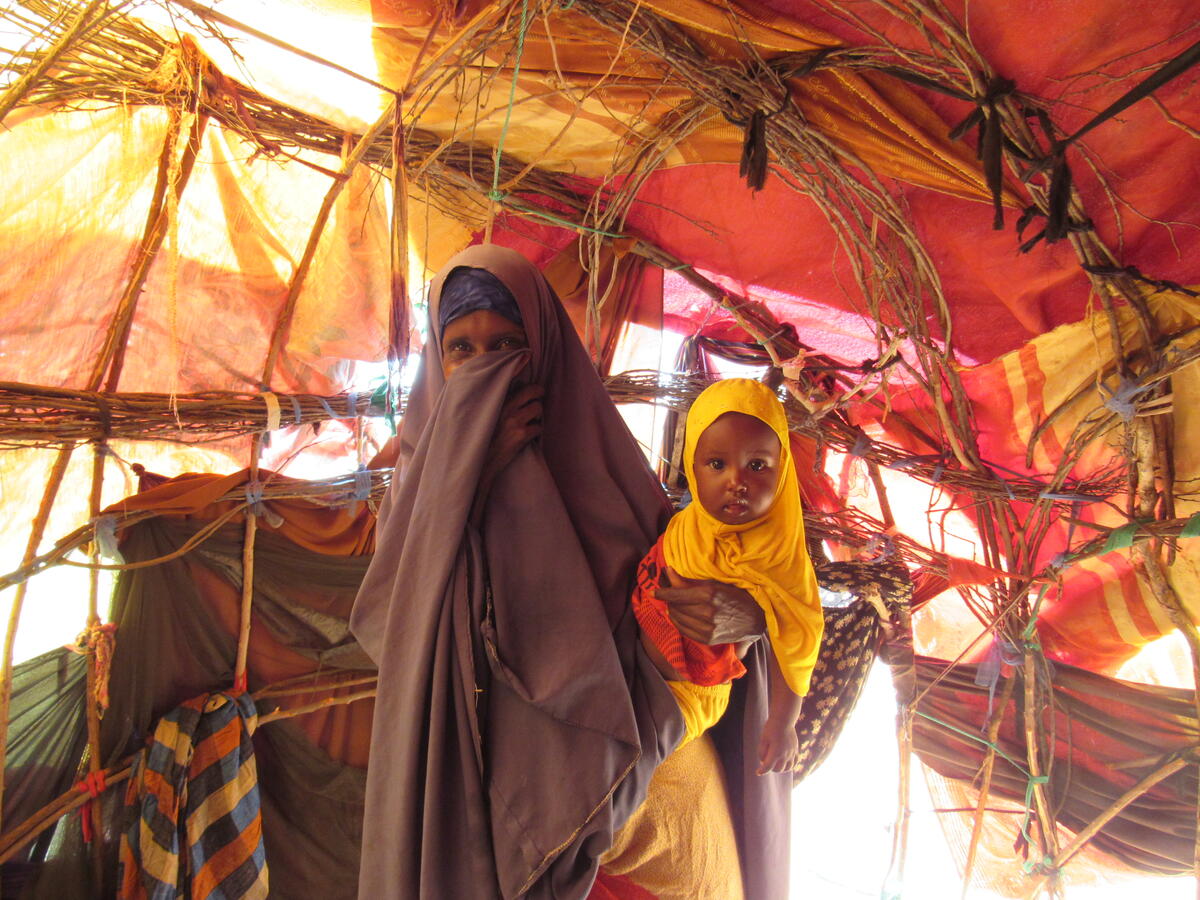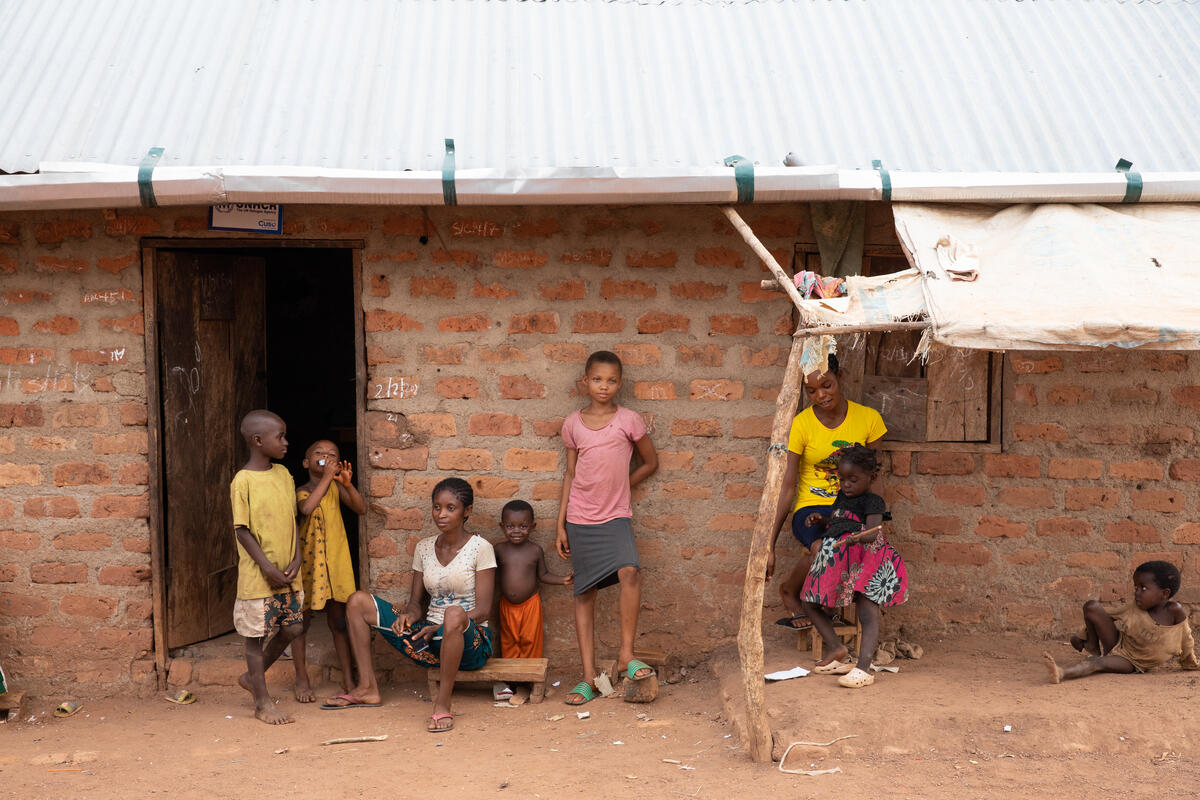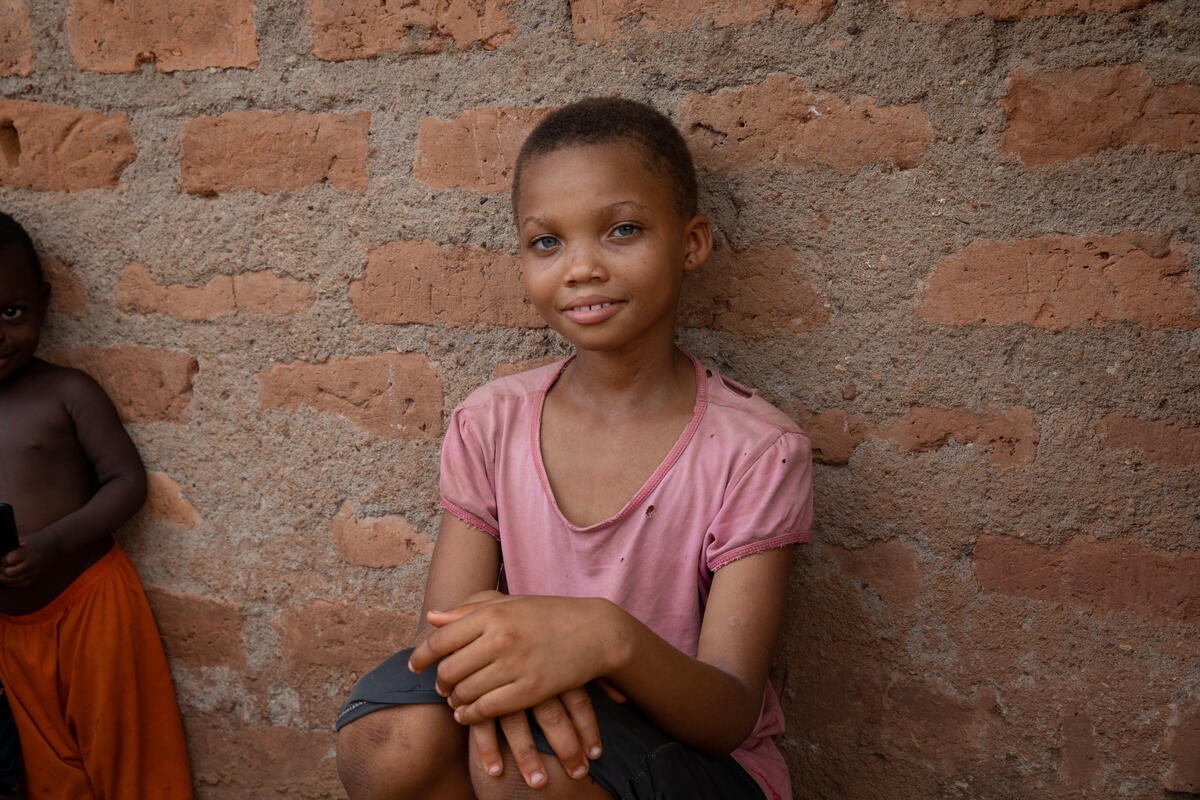Every day, women around the world are forced to make heartbreaking decisions for themselves and their children amidst conflict.
Faced with the choices of whether to leave or stay, what to bring, and where to go, they carry the burden of figuring out what’s best for their families, often without much support or anyone to look out for their safety.
The Russian invasion of Ukraine has provided a renewed look at refugees' experiences in the European country and beyond.
More than 6.3 million Ukrainians have fled the conflict since February. With men forced to stay back and fight in the war, women and children were left to escape the violence alone.
Award-winning British photographer Lewis Khan shot a series of portraits released last month of mothers and children on their way out of Ukraine for the humanitarian organization Save the Children.
The families profiled are receiving temporary accommodation in northern Romania by Save the Children and their partners, and receiving cash voucher assistance, mental health support, and legal advice. Khan’s images capture the last-minute stress of mothers abandoning loved ones and belongings, as bombs and bullets struck their homes, not knowing if they’d ever return. Some families brought only a few changes of clothes, their children's toys, and medical supplies.
The photos show mothers, their families’ fight for survival, and hope for the future.
The experiences of Ukrainian families mirror those of other refugee families who have been displaced from Somalia, Cameroon, and other countries Save the Children supports. Since 1919, the organization has worked to provide refugees with lifesaving assistance, quality health care, and other services in camps, on the move, or in host communities. Save the Children’s photo series and interviews help uplift and humanize stories from refugee crises around the globe.
 Iryna*, who is seven months pregnant, had just 24 hours to decide whether or not to leave Ukraine with her 10-year-old daughter Nikolina*.
Iryna*, who is seven months pregnant, had just 24 hours to decide whether or not to leave Ukraine with her 10-year-old daughter Nikolina*.
Of the refugees who fled Ukraine, 924,000 people arrived in Romania alone in the largest displacement of people in Europe since World War II, according to Save the Children. Save the Children has been operating in Ukraine since 2014, delivering essential humanitarian aid to children and their families, and is calling for the immediate end of violence to protect children. The organization is working through local partners to provide shelter, food, cash, fuel, psychosocial support, and baby and hygiene kits to displaced families in Ukraine.
Iryna, whose name has been changed to protect her identity, was seven months pregnant when she had just 24 hours to decide before curfew if she should leave Kyiv with her 10-year-old daughter, leaving behind her sick mother who couldn’t travel. She ended up making the train journey to Romania in a bathroom with her daughter to avoid crowds.
“For my child and my unborn baby I decided, if I can, I have to go. They have their whole lives ahead of them,” Iryna told Save the Children. “At each stop, we were so scared. There were harsh quarrels, so we locked the door at those stops.”
Pregnant refugee women are especially at risk and 60% of preventable maternal deaths take place in humanitarian settings.
Iryna’s daughter Nikolina, whose name has also been changed, shared with Save the Children that she was afraid of the soldiers at the train station who were holding weapons.
“Each one of these stories is a powerful reminder of what millions of families have been through as we mark the first three months of this terrible war,” Save the Children Romania’s CEO Gabriela Alexandrescu said in a press release issued to Global Citizen.
 Portrait of Marta*, 3, daughter to Vira*, 26, in temporary accommodations, a school converted into dorms in Maramures, Romania.
Portrait of Marta*, 3, daughter to Vira*, 26, in temporary accommodations, a school converted into dorms in Maramures, Romania.
Women account for half of the 19.6 million refugees worldwide. They often step up to act as first responders in crises and are then faced with the added barrier of gender discrimination when they’re seeking refuge. In addition to being at a greater risk of falling into extreme poverty, they encounter unique challenges and protection risks, including family separation, psychosocial stress and trauma, health complications, physical harm, and potential exploitation. Once refugee mothers flee, they are then forced to try and care for their families in overcrowded conditions with limited or no access to health care.
 Banna*, 11, and his mother Rubaida*, 30, at their home in a Rohingya refugee camp in Cox’s Bazar that has been rebuilt five times in the last four years.
Banna*, 11, and his mother Rubaida*, 30, at their home in a Rohingya refugee camp in Cox’s Bazar that has been rebuilt five times in the last four years.
In March, 28-year-old Leylo, whose name has been changed to protect her identity, and her seven children aged four months to 12 years old, walked for three days and rode on donkey carts for another two to escape drought in the South-West state of Somalia. They traveled about 55 miles from their homes to Save the Children’s camp in Baidoa, Somalia. They only brought a rice sack filled with a few kitchen utensils.
Political instability and civil war in the 1990s spawned a refugee crisis that has lasted more than three decades in Somalia. Now the country has one of the highest populations of internally-displaced people in the world. Baidoa has one of the largest populations of internally-displaced people in Somalia, with about 450,000 people living in more than 500 camps spread across the town and its surroundings.
The drought in the South-West state decimated all of Leylo’s family’s produce and grain on their small farm and killed their three goats. Leylo’s husband went to Kenya to find medical assistance, months before she was forced to flee, leaving her to support everyone on her own.
“I have never had to leave my home before, but this time we were left with absolutely nothing,” Leylo told Save the Children. “It was really hard for my children to leave because they have never traveled and this was all they knew. But I was worried that I could not feed them and they would get sick.
“We came here with nothing. We had nothing to bring. I do hope that one day we will be able to go back to our home but that won’t be until the drought is really over. It seems now that the drought is all the time so that is really worrying for us and for the children.”
 Suad*, 55, and Samia*, 12, live in an IDP camp in Somalia after leaving their home due to increasingly more frequent, severe droughts. In 2017, Suad* had 400 cows and goats, but a drought left her with only two animals. Over the following years, she was able to recover some of her livestock. The most recent drought, however, left her with almost nothing.
Suad*, 55, and Samia*, 12, live in an IDP camp in Somalia after leaving their home due to increasingly more frequent, severe droughts. In 2017, Suad* had 400 cows and goats, but a drought left her with only two animals. Over the following years, she was able to recover some of her livestock. The most recent drought, however, left her with almost nothing.
For 26-year-old Okowo, it took her and her five children a week to reach Nigeria after they fled the conflict in Cameroon.
In Cameroon, there have been two ongoing conflicts since 2016 that have displaced more than 750,000 people and left an estimated 2.2 million in need of critical humanitarian support.
“They were fighting, killing people. We didn’t want to die, that’s why we left,” Okowo’s daughter Jemima told Save the Children.
Women refugee voices around the world are often left out of the policies aimed to protect them, but can play a pivotal role in finding solutions to address their needs. Placing more women in decision-making roles can help address the refugee crisis more sustainably and responsibly. Because refugee women often act as the main caretakers for children and family members, they require the most adequate protection and support.
“Mothers have had to make choices no one should ever have to make, leaving everything behind in the hope of keeping their children safe,” Save the Children’s Alexandrescu said.



